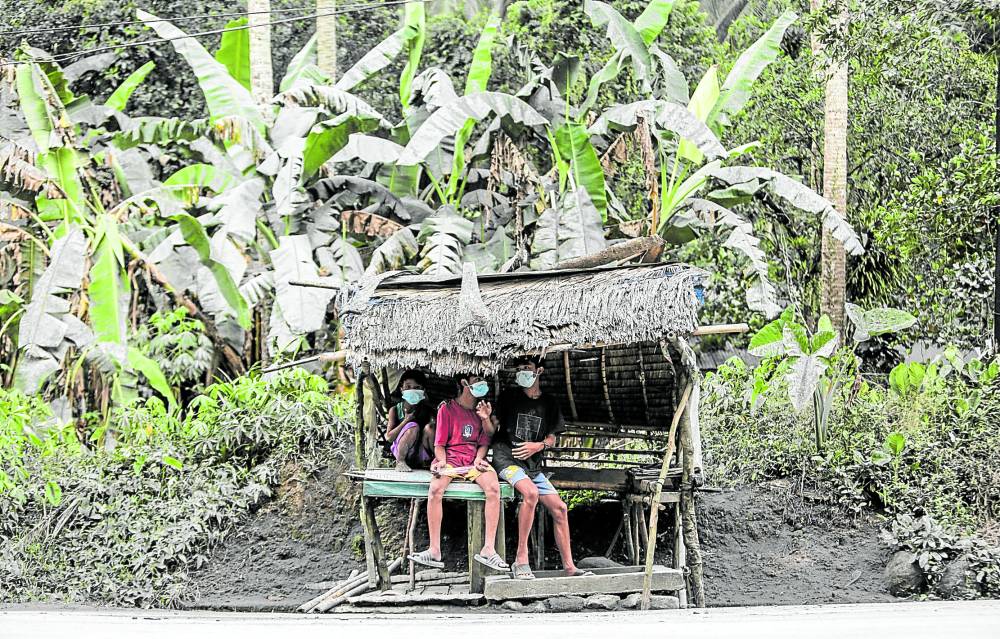BFAR: Another fish kill possible in areas hit by Bulusan ashfall

BULUSAN ASH Children wearing face masks seek shelter at a roadside nipa shed in the village of Buraburan in Juban, Sorsogon, as ash blankets several villages in the town and Irosin following the eruption of Mt. Bulusan on June 5. —MARK ALVIC ESPLANA
LEGAZPI CITY—The Bureau of Fisheries and Aquatic Resources (BFAR) on Thursday warned of another possible fish kill after their monitoring revealed “poor water quality” believed caused by the ashfall from the phreatic eruption of Mt. Bulusan on June 5.
Nonie Enolva, spokesperson for the BFAR Bicol, said laboratory results of water tests that the agency conducted showed high levels of ammonia and hydrogen sulfide, which meant “water quality is not suitable for aquaculture purposes.”
Water samples were taken from a tilapia pond at Sitio Caladgao in Barangay Buraburan, Juban town, and six stations in Sorsogon Bay.
“There’s a big probability that the fishpond was affected by the ashfall, but we cannot ascertain [if that was the case] in Sorsogon Bay because we had no baseline [data] before the eruption,” she said.
Mt. Bulusan on June 5 spewed ash in a steam-driven explosion that affected the villages of Puting Sapa, Buraburan, Añog, Bacolod, Calmayon, Catanusan and Guruyan in Juban town and the villages of Bolos, Cogon, Monbon, Tinampo and Gulang Gulang in Irosin town.
Roberto Flores, acting provincial agriculturist of Sorsogon, said a report received by his office showed at least 50 kilograms of marketable-size tilapia were lost to fish kill in the backyard pond of Alfredo Llanzana in Juban town. The assessed damage reached P16,720, much lower than the initial P100,000 reported by the BFAR.
‘Crack-drying’ pond
The BFAR Bicol recommended that fishpond owners in Juban “crack-dry” their fishponds to ensure that the accumulated toxic gases will be released from the soil. According to Flores, crack-drying means the pond should be plowed and dried until the soil cracks for at least three days to a week. Enolva said decaying tilapia and accumulation of other organic substances in Llanzana’s pond added to the high concentration of ammonia in the water. She said pond’s water source, or the river tributaries on Mt. Bulusan, would also contribute to changes in the quality of water.
Leo Tabing, the municipal agriculturist of Juban, said the other fishponds in the town were not affected by the ashfall but they were continuously monitoring some areas.
In its 5 a.m. bulletin on Thursday, the Philippine Institute of Volcanology and Seismology recorded five volcanic earthquakes in the past 24 hours, but Bulusan remained under alert level 1, or low level of unrest. —MA. APRIL MIER-MANJARES
RELATED STORY:
BFAR says ‘very low level of dissolved oxygen’ killed fish at Manila Bay